Information Technology Reference
In-Depth Information
the photographic transparency is re-registered with the original recording array and
illuminated by diffuse white light from the rear, the object will be constructed in
space by the intersection of ray bundles emanating from each of the lenslets as
shown in figure 1b. It is the integration of the pencil beams, which renders 3D
holoscopic imaging (integral imaging) unique and separates it from Gaussian imag-
ing or holography. The biggest drawback, however, to the Lippmann method was
that replay of the reconstructed images were pseudoscopic, or depth reversed,
where the foreground becomes the background and vice versa, as shown in figure
1b. H. E. Ives was the first to recognize the problem in 1931 [11], and proposed a
secondary exposure solution to invert the depth. This is known as a “two step”
method, where a secondary exposure of the original photographic plate through an-
other lens sheet was made. He demonstrated this solution by using a secondary ar-
ray of pin-hole apertures. This proposal does not constitute an effective solution for
the pseudoscopic to orthoscopic conversion problem. This is because the two-step
recording introduces significant amounts of noise, due to degradation in the sam-
pling caused by aberrations in the lenses. Since, optical and digital techniques to
convert the pseudoscopic images to orthoscopic images have been proposed by
several researchers [12, 18, 20].
Object in the scene
Recording Plate
Microlens array
(a) Recording of Integral Photography
(b) Replay of Integral Photography
Fig. 1
Recording and replay of the Integral Photography
An optical configuration necessary to record one stage orthoscopic 3D holo-
scopic images has been proposed by Davies
et. al.
[12-16] and is shown in figure
2. This employs a pair of microlens arrays placed back to back and separated by
their joint focal length, which produces spatial inversion. The arrangement allows
a pseudoscopic image to be transferred such that it can straddle a separate mi-
crolens recording array (close imaging). The recording micro-lens array can be
put anywhere in the transferred image space to allow the desired effect to be
achieved freely: The object can be entirely inside of the display, outside of the
display, or even straddling the display. The space transfer imaging scheme offers
the flexibility of recording the object at a desired depth.




